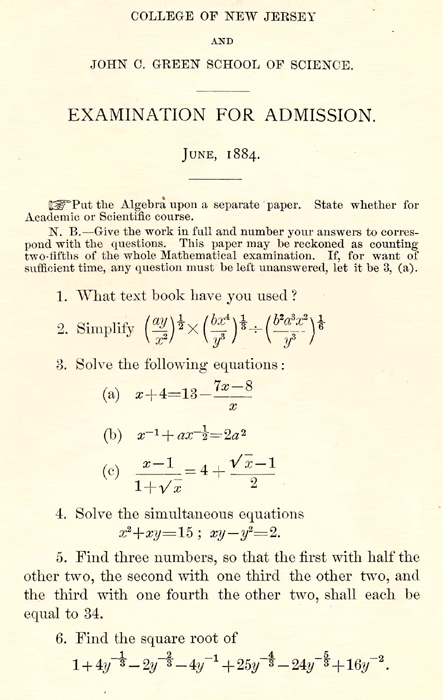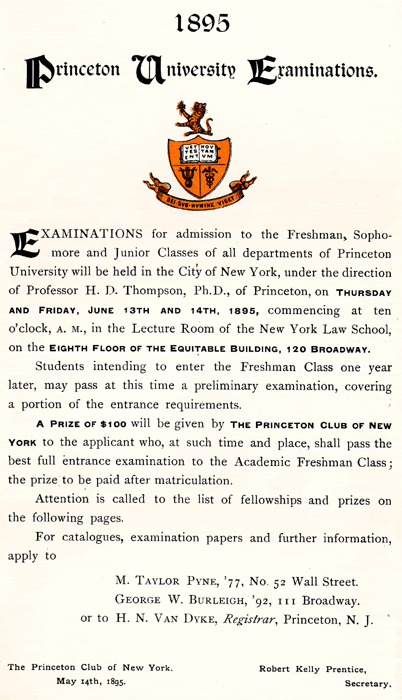 It’s December, which means that the college admission season is winding down. To “celebrate,” Diggin’ in Mudd will be bringing you admissions-related posts throughout the month of December.
It’s December, which means that the college admission season is winding down. To “celebrate,” Diggin’ in Mudd will be bringing you admissions-related posts throughout the month of December.Standardized tests have unfortunately become a major part of academic life and no American test is more emblematic of these than the SAT. But there wasn’t always an SAT, which was born in the 1920s out of the WWI US Army intelligence tests, which were themselves the first intelligence tests administered en masse.
But even before the SAT, before the Army tests, there was the College Board (fun bit of trivia: the College Board is a Harvard Brainchild, but before you go and tease your Harvard friends over this, know that the SAT itself is a Princeton invention.) And before the College Board?
That means that if you wanted to apply to Princeton, Harvard, and Yale, you had to sit for three different tests. (I applied to ten schools, can you imagine sitting for ten different tests?) Oh, and the tests were only offered in certain places, so if you lived far away from where they were administered, well, you either traveled to where they were being held, or you were out of luck.
Extracts from the tests and commentary, after the jump.
A student seeking admission to the freshman class in 1884 had to pass exams in English: grammar, geography and US history; Latin; Greek; and mathematics: arithmetic, the metric system, algebra, and Euclidean geometry. Don't ask me how US history is part of English.
What were these tests like? Take a look from yourself: here’s the first page of the math section from the 1884 test.

Note that it's completely mechanical. Being a history major, I kind of lost patience with it after 3d — but as far as math goes, it's not very complex, no trig, no calculus. This is the kind of stuff I learned my freshman and sophomore years of high school.
For the English Majors: the topic for the English Essay in 1884 was "Fenimore Cooper: his life and any one of his novels" I don't have the test, but the topic was announced beforehand in a precursor to the admission pamphlets.
So why was getting into Princeton hard in the 19th century

I don't know a word of Greek ("Eureka" hardly counts), but note that again, we see there's a mechanistic quality to the exam. To be fair, this is just the first page; it gets harder, or at least more involved.
Now, the good news: There were prizes.

And a hundred bucks was a lot back then. Especially when you take into account that a year’s tuition in 1884, not counting room and board and other expenses, amounted to $120.
All images are courtesy of the Seeley G. Mudd Manuscript Library. Any other use of these images requires written permission from the archive.





4 comments:
This was cool!
thanks
the mathematics section of the exam was easier because people knew less about mathematics back then. The average student taking physics 101 knows more about physics than Newton. Without the benefit of calculators and modern forms of analysis, applied math like Calculus did not get so difficult. Also, today college preparation is "better" (at least in the math and sciences- again due to more knowledge about the subject matter and technology) and more students are getting adequate preparation for college.
Very cool article, it is interesting to see the changes in perception of a liberal arts education and what is considered proper preparation for that type of education.
Agree, this was really interesting!
Agree, this was really interesting!
Post a Comment